
The Victoria Cross serves as the highest award to any member of the Canadian Armed Forces for extraordinary valour and devotion to duty while facing hostile forces.
There must have been something special in the Belgian air during the waning days of autumn in 1917. While British, Australian and New Zealand troops had struggled for nearly three months to break German lines on a ridge near the village of Passchendaele, the arrival of the Canadian Corps on Oct. 26 turned the tide.
Amidst dismal weather and heavy fire, the Canadians captured the hill on Nov. 6. More than 4,000 were killed and some 12,000 more wounded in the effort. But the battle also produced unparalleled moments of courage among the Canadian forces. Nine Canadians were awarded the Victoria Cross for their actions during the offensive—more, by far, than in any other single engagement the country has been involved in.
Legion Magazine remembers the heroic deeds of those nine men here on the 105th anniversary of the Battle of Passchendaele by reprinting the original Victoria Cross citation of each, including the date of their memorable action.
Of course, it’s no coincidence that a few dates repeat, specifically, Oct. 26, Oct. 30 and Nov. 6. Those days correspond with the fiercest attacks, each of the first two resulting in just hundreds of metres of ground gained, with heavy losses. Indeed, in only an hour on Oct. 30, the Princess Patricia’s Canadian Light Infantry had lost almost its entire junior officer ranks.
The Canadians successfully captured the ridge in the third assault on Nov. 6, though the cost was once again high, including the life of Private James Robertson, one of the two Passchendaele combatants to receive his VC posthumously.
Winston Churchill, Britain’s future wartime prime minister, said the battle was “a forlorn expenditure of valour and life without equal in futility.” Still, for Canada, the victory reinforced the growing reputation of the country’s front-line fighting force—aided by the particularly brave acts of these nine men.
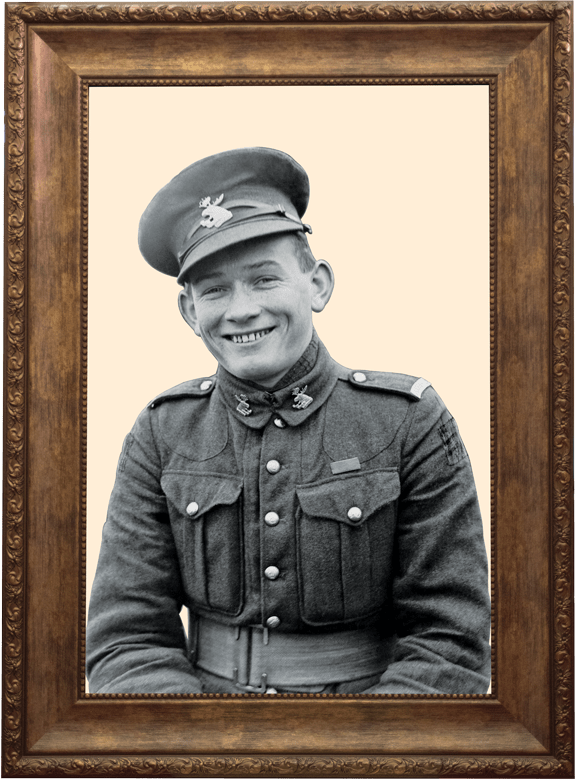
Born: Aug. 17, 1897, Montreal Date of action: Oct. 26, 1917 Unit: 4th Canadian Mounted Rifles Fate: died in Toronto on Jan. 4, 1950, at age 52
For most conspicuous bravery and resource when the right flank of our attack was held up by heavy machine-gun and rifle fire from a “pill-box” strong point. Heavy casualties were producing a critical situation when Pte. Holmes, on his own initiative and single-handed, ran forward and threw two bombs, killing and wounding the crews of two machine guns. He then returned to his comrades, secured another bomb, and again rushed forward alone under heavy fire and threw the bomb into the entrance of the “pill-box,” causing the nineteen occupants to surrender.
By this act of valour at a very critical moment Pte. Holmes undoubtedly cleared the way for the advance of our troops and saved the lives of many of his comrades.

Born: Nov. 18, 1895, Winnipeg Date of action: Oct. 26, 1917 Unit: 52nd Battalion (New Ontario) Fate: presumed drowned in Ontario’s Lac Seul on Nov. 15, 1922, at age 26
For most conspicuous bravery in an action in which he led his company with extraordinary skill and determination.
After the original attack had failed and two companies of his unit had launched a new attack, Capt. O’Kelly advanced his command over 1,000 yards under heavy fire without any artillery barrage, took the enemy positions on the crest of the hill by storm, and then personally organised and led a series of attacks against “Pill-boxes,” his company alone capturing six of them with 100 prisoners and 10 machine guns.
Later on in the afternoon, under the leadership of this gallant officer, his company repelled a strong counter-attack, taking more prisoners, and subsequently during the night captured a hostile raiding party consisting of one officer, 10 men and a machine gun.
The whole of these achievements were chiefly due to the magnificent courage, daring and ability of Capt. O’Kelly.
A damaged pillbox provides cover to wounded Canadians

Born: Aug. 15, 1891, Portland, Ore.; moved to Moosomin, Sask., at age two Date of action: Oct. 30, 1917 Unit: Princess Patricia’s Canadian Light Infantry Fate: died in Regina on April 5, 1963, at age 72
For most conspicuous bravery in attack, when single-handed he captured a commanding “Pill-box” which had withstood the heavy bombardment and was causing heavy casualties to our forces and holding up the attack. He rushed a sniper’s post in front, destroyed the garrison with bombs, and, crawling on top of the “Pill-box,” he shot the two machine-gunners with his revolver. Sgt. Mullin then rushed to another entrance and compelled the garrison of ten to surrender.
His gallantry and fearlessness were witnessed by many, and, although rapid fire was directed upon him, and his clothes riddled by bullets, he never faltered in his purpose and he not only helped to save the situation, but also indirectly saved many lives.
Mullin had previously been awarded the Military Medal for his conduct during the Canadian Corps attack on Vimy Ridge in April 1917.
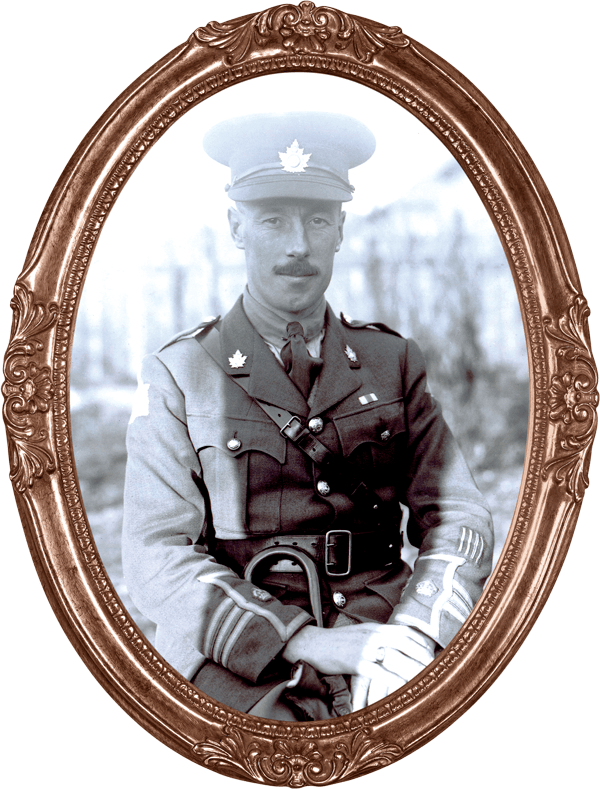
Born: Feb. 26, 1888, Watford, England; moved to Red Deer, Alta. Date of action: Oct. 30-31, 1917 Unit: 5th Battalion, Canadian Mounted Rifles Fate: died in Victoria on May 30, 1984, at age 96
For most conspicuous bravery and skilful handling of the troops under his command during the capture and consolidation of considerably more than the objectives allotted to him, in an attack.
Just prior to the advance Maj. Pearkes was wounded in the left thigh. Regardless of his wound, he continued to lead his men with the utmost gallantry, despite many obstacles.
At a particular stage of the attack his further advance was threatened by a strong point which was an objective of the battalion on his left, but which they had not succeeded in capturing. Quickly appreciating the situation, he captured and held this point, thus enabling his further advance to be successfully pushed forward.
It was entirely due to his determination and fearless personality that he was able to maintain his objective with the small number of men at his command against repeated enemy counter-attacks, both his flanks being unprotected for a considerable depth meanwhile.
His appreciation of the situation throughout and the reports rendered by him were invaluable to his Commanding Officer in making dispositions of troops to hold the position captured.
He showed throughout a supreme contempt of danger and wonderful powers of control and leading.
A shell explodes near stretcher-bearers carrying wounded at the height of battle. Others, including a German prisoner, recoil in reaction.
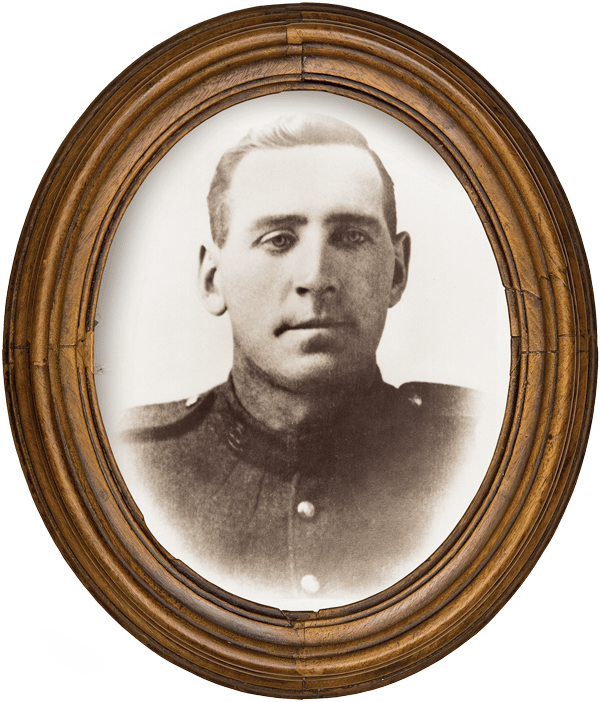
Born: Oct. 26, 1883, Pictou County, N.S. Date of action: Nov. 6, 1917 Unit: 27th Battalion Fate: Killed in action on Nov. 6, 1917, at age 34
For most conspicuous bravery and outstanding devotion to duty in attack. When his platoon was held up by uncut wire and a machine gun causing many casualties, Pte. Robertson dashed to an opening on the flank, rushed the machine gun and, after a desperate struggle with the crew, killed four and then turned the gun on the remainder, who, overcome by the fierceness of his onslaught, were running towards their own lines. His gallant work enabled the platoon to advance. He inflicted many more casualties among the enemy, and then carrying the captured machine gun, he led his platoon to the final objective. He there selected an excellent position and got the gun into action, firing on the retreating enemy who by this time were quite demoralised by the fire brought to bear on them.
During the consolidation Pte. Robertson’s most determined use of the machine gun kept down the fire of the enemy snipers; his courage and his coolness cheered his comrades and inspired them to the finest efforts.
Later, when two of our snipers were badly wounded in front of our trench, he went out and carried one of them in under very severe fire.
He was killed just as he returned with the
second man.
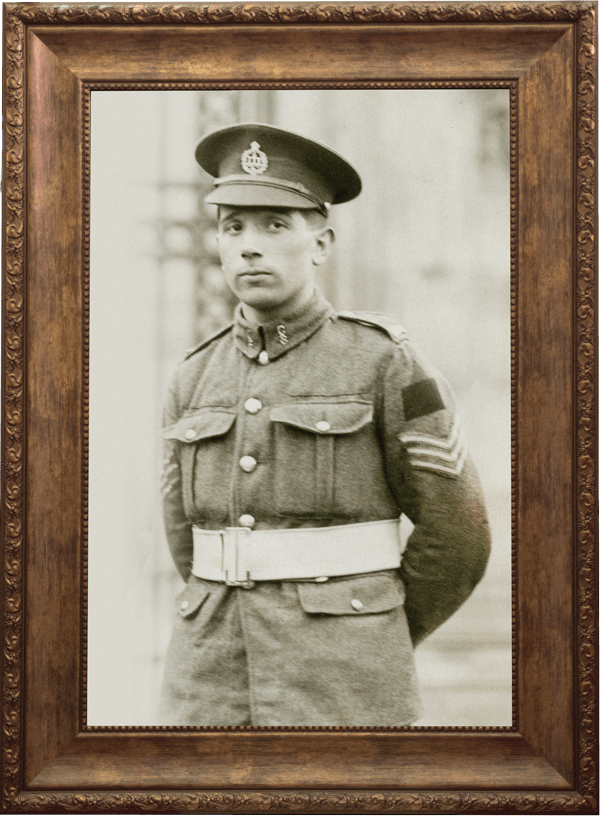
Born: Sept. 20, 1893, Baldavie, Scotland; moved to Toronto at age 16 Date of action: Nov. 6, 1917 Unit: 3rd Battalion Fate: died in Toronto on Aug. 15, 1958, at age 64
For conspicuous bravery when in attack his unit was held up by three machine-guns. Cpl. Barron opened on them from a flank at point-blank range, rushed the enemy guns single-handed, killed four of the crew, and captured the remainder. He then, with remarkable initiative and skill, turned one of the captured guns on the retiring enemy, causing them severe casualties.
The remarkable dash and determination displayed by this N.C.O. in rushing the guns produced far-reaching results, and enabled the advance to be continued.
Barron served with the Royal Regiment of Canada during the Second World War. He was also among the Victoria Cross recipients at the coronation of Queen Elizabeth II in 1953.

Born: Feb. 17, 1895, Uxbridge, England; moved to Alberta at age 16 Date of action: Oct. 30, 1917 Unit: 49th Battalion Fate: died in Lougheed, Alta., on June 21, 1957, at age 62
For most conspicuous bravery in action during prolonged and severe operations.
Shortly after the attack was launched, the company to which he belonged came under intense artillery fire, and further advance was held up by a very severe fire from an enemy machine gun. Pte. Kinross, making a careful survey of the situation, deliberately divested himself of all his equipment save his rifle and bandolier and, regardless of his personal safety, advanced alone over the open ground in broad daylight, charged the enemy machine gun, killing the crew of six, and seized and destroyed the gun. His superb example and courage instilled the greatest confidence in his company, and enabled a further advance of 300 yards to be made and a highly important position to be established.
Throughout the day he showed marvellous coolness and courage, fighting with the utmost aggressiveness against heavy odds until seriously wounded.
Mount Kinross, near Jasper, Alta., is named in his honour.
Soldiers of the 10th Field Artillery Brigade, Australian 4th Division, traverse the destroyed terrain of Château Wood, 10 kilometres southwest of Passchendaele, a scene of fierce combat between the Allies and Germany in the war.
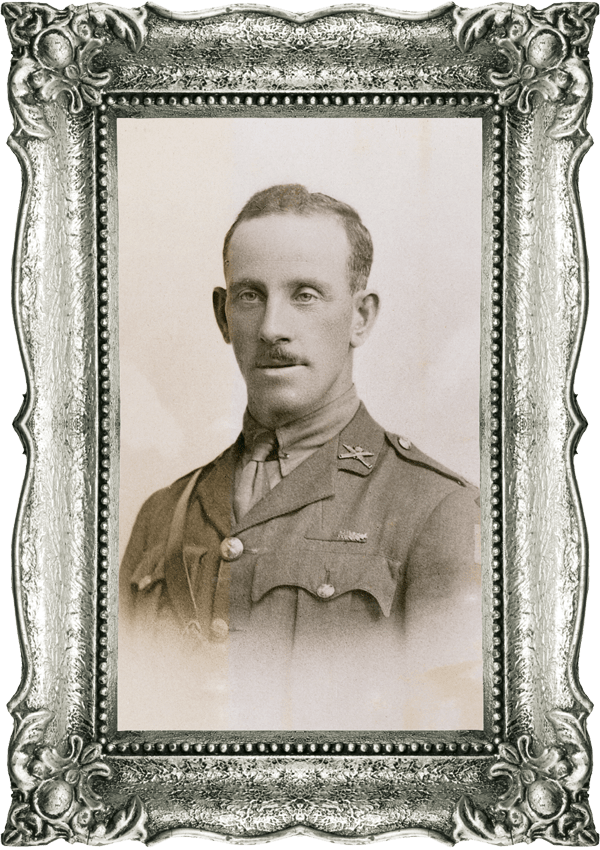
Born: Dec. 5, 1885, Inverness, Scotland; moved to North Bay, Ont., at age 25 Date of action: Oct. 30, 1917 Unit: 7th Canadian Machine Gun Company Fate: Killed in action on Oct. 30, 1917, age 31
For most conspicuous bravery and leading when in charge of a section of four machine guns accompanying the infantry in an attack.
Seeing that all the officers and most of the non-commissioned officers of an infantry company had become casualties, and that the men were hesitating before a nest of enemy machine guns, which were on commanding ground and causing them severe casualties, he handed over command of his guns to an N.C.O., rallied the infantry, organised an attack, and captured the strong point.
Finding that the position was swept by machine-gun fire from a “pill-box” which dominated all the ground over which the troops were advancing, Lt. MacKenzie [sic] made a reconnaissance and detailed flanking and frontal attacking parties which captured the “pill-box,” he himself being killed while leading the frontal attack.
By his valour and leadership this gallant officer ensured the capture of these strong points and so saved the lives of many men and enabled the objectives to be attained.
McKenize had previously received the Distinguished Conduct Medal and the Croix de Guerre from the French government.
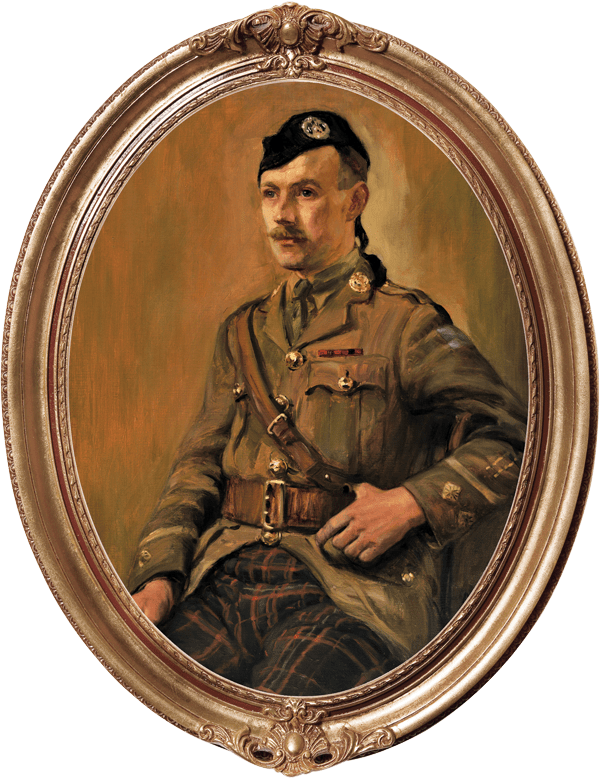
Born: Oct. 10, 1887, Ayr, Scotland; moved to Winnipeg at age 23 Date of action: Oct. 26, 1917 Unit: 43rd Battalion Fate: died in Vancouver on Jan. 20, 1968, at age 80
For most conspicuous bravery and resource in action under critical and adverse conditions.
Having gained a position he rallied the remnant of his own platoon and men of other companies, disposed them to command the ground in front, and inflicted heavy casualties upon the retreating enemy. Later, he dispersed a counter-attack, thus enabling supporting troops to come up unmolested.
He then personally communicated to Battalion Headquarters an accurate and valuable report as to the position on the Brigade frontage, and after doing so rejoined his command and carried on until relieved.
His courage and splendid example inspired all ranks and coupled with his great gallantry and skill undoubtedly saved a very critical situation.
Shankland had previously been awarded the Distinguished Conduct Medal for his actions at Sanctuary Wood in June 1916. He was one of three Victoria Cross recipients to have lived on Winnipeg’s Pine Street, later named Valour Road in their honour.